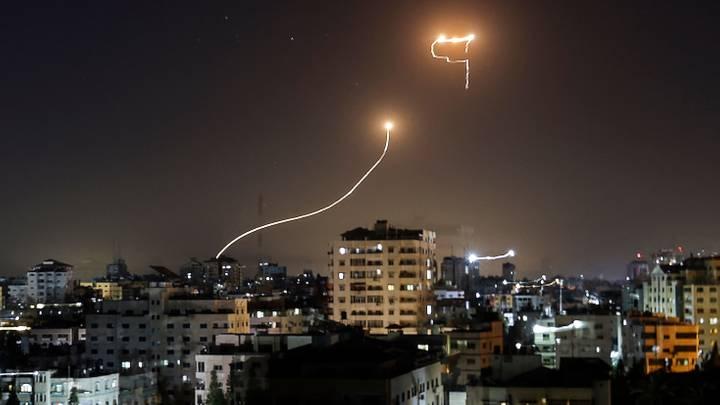Atlanta, USA (CNN) -- Over the past few days, thousands of rockets have been fired from Gaza towards Israeli territory. And each time it was confronted by missiles from the Israeli Iron Dome defense system.
The Israeli army wrote on its Twitter page, last Tuesday, that "the Iron Dome air defense system has one goal, which is to intercept missiles in the air before they can kill Israeli civilians. We will not apologize for saving lives."
The Israeli army says that these missiles intercepted more than 90% of the targeted missiles. But Iron Dome is not hunting every rocket. In fact, according to official IDF data, the regime has destroyed less than half of the rockets and mortars fired by Hamas and Islamic Jihad.
As of late last Sunday, the Israeli Air Force said that some 3,100 rockets had been fired from Gaza since the start of the latest conflict, while some 450 of them had failed to penetrate Israeli airspace.
Out of the remaining 2,650 missiles, about 1,210 were intercepted.
Given the sheer volume of rockets being launched from Gaza, often in heavy volleys, Iron Dome "decides" which ones pose the greatest threat to urban areas and infrastructure, ignoring those whose trajectory indicates the potential for hitting uninhabited areas. inhabited or it will fall into the sea.
The IDF estimated that there were between 13,000 and 14,000 rockets in Gaza prior to the start of this escalation, so selective targeting of these rockets would seem very important.

Iron Dome, developed by the Israeli company Rafael Advanced Defense Systems Ltd. and the American company Raytheon, entered operation 10 years ago.
The system consists of a radar to detect missiles, a command and control system that analyzes the data provided by the radar, and air defense missiles that are then directed to intercept, while each missile costs about $40,000, so intercepting 1,200 incoming missiles is a very expensive proposition.
While many air defense systems are designed to counter ballistic missiles, Iron Dome targets unguided missiles that remain at low altitudes. This system is effective up to a range of 70 km.
Meanwhile, the Israeli army is trying to locate and destroy rocket launchers inside Gaza, many of which are mobile, as well as the rocket factories that manufacture them.
Each battery contains a fire control radar to identify targets. It also has a portable rocket launcher. The system is easily transportable, requiring only a few hours to move in and set up.
The Iron Dome missile system is highly maneuverable, 3 meters long and about 15 centimeters in diameter. Security analysis group IHS Jane said in 2012 that it weighed 90 kilograms.
IHS Jane said it believed the warhead carried 11 kilograms of high explosives. Its range ranges from 4 km to 70 km.
Iron Dome has also been repeatedly upgraded to be able to counter the threat of mortars, which stay in the air for a much shorter time than rockets, making them more difficult to intercept.
The system has recently been upgraded to counter the threat of drones, according to the Israeli military, who said on May 13 that the system "intercepted a Hamas drone that crossed from the Gaza Strip into Israeli territory," the first time that a drone had been intercepted. during this conflict.
Israeli military analysts consider that the system has largely succeeded in protecting civilians, but they see Iron Dome as just one element among a broader military strategy.
